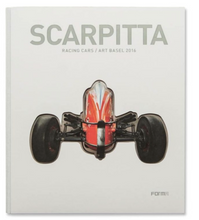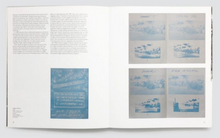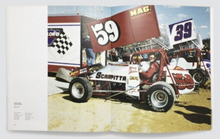Luigi Sansone, Valentina Fasan
This year, at Art Basel 2016, Tornabuoni Art is showing the core pieces of some of the most emblematic works by Salvatore Scarpitta inspired by the world of “racing cars”. In this book, Luigi Sansone, the author of the catalogue raisonée on Scarpitta, deals with one of the most fascinating but also least understood aspects of the creative talent of Salvatore Scarpitta. Through photos from archives, it has been possible to present a far deeper reading of these works, especially in the case of the Sal Ardun Special model, whose aesthetic form resembled the cars built by Scarpitta in the sixties; however, unlike the previous models, this was no longer a simulation, because for the first time, the artist also equipped the model with a functioning motor.
The essays included in the catalogue describe the artist and his work with great precision, defining the origin and theoretical context from which these works took form, and how they were developed, exhibited and became recognised by a far-reaching public.
Since his adolescent years, Salvatore Scarpitta (New York, 1919) was able to develop a special passion for car racing and the racing circuit world. He completed his high school studies in Hollywood in 1936, and decided to travel to Italy to study at the Accademia di Belle Arti in Rome, where he graduated in 1940. In 1958, for the first time he showed his extroflexed canvases, together with works based on stretched strips and bands at the Galleria La Tartaruga in Rome. These works brought a strong breeze of originality to the artistic world in Rome and stimulated a large number of Italian and international artists. At the beginning of the Sixties, Scarpitta built two racing cars that he showed in 1965 at the Leo Castelli Gallery. In the summer of 1985, in his studio-garage in Baltimore, Maryland, Scarpitta realised a dream that dated back to his teenage years: he built a perfectly authentic racing car (Dirt Track Racer) which, with the help of Leo Castelli, he took to the dirt track circuits of Maryland and Pennsylvania to compete against the leading champions of the period. Between the Fifties and the present time, Scarpitta’s works have been shown in a large number of exhibitions in Europe and in the United States. Scarpitta died in New York on April 10, 2007.








